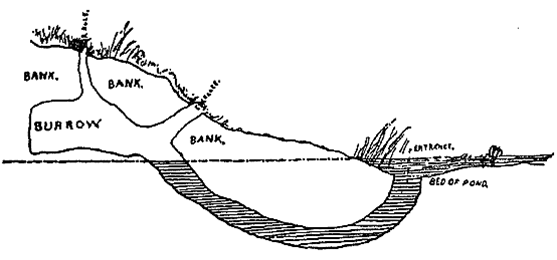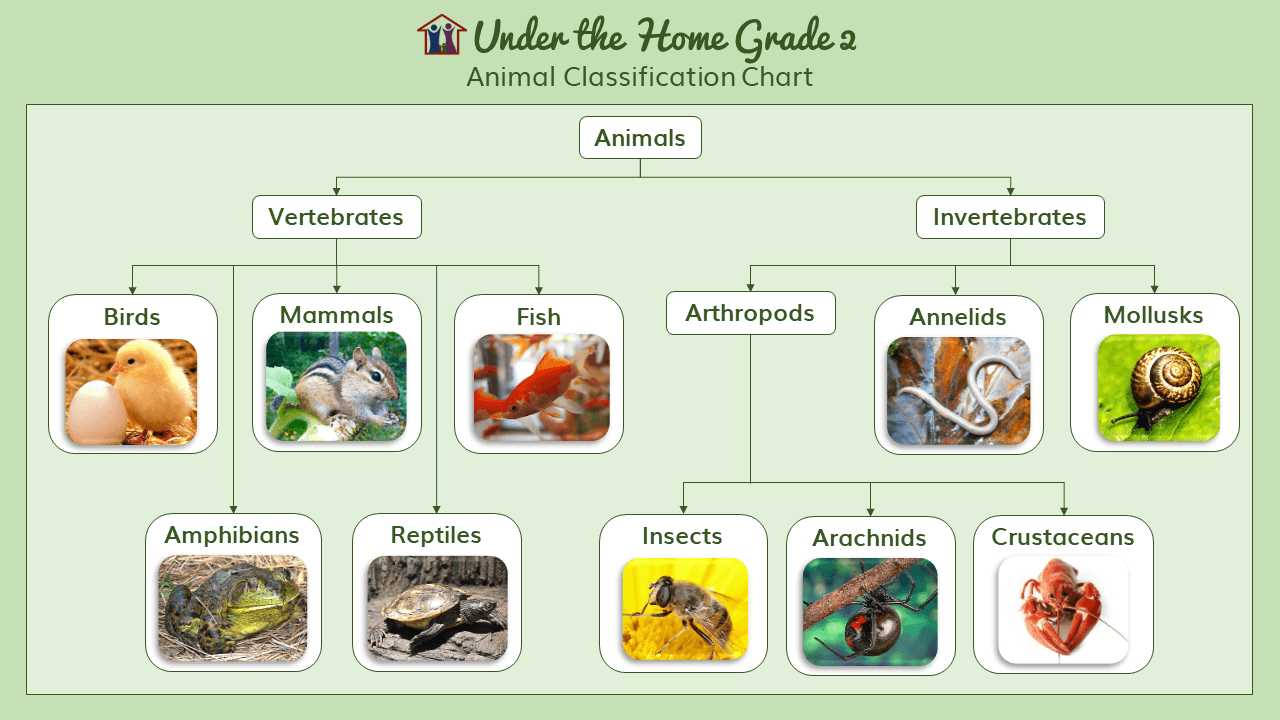Lesson 27: The Muskrat
Performer: LibriVox - Kathy Wright
'The Playful Muskrats' from Among the Pond People by Clara Dillingham Pierson
One warm day in winter, when some of the pussy-willows made a mistake and began to grow because they thought spring had come, a party of Muskrats were visiting in the marsh beside the pond. All around them were their winter houses, built of mud and coarse grasses. These homes looked like heaps of dried rushes, unless one went close to them. If one did that, he could plainly see what they were; and if one happened to be a Muskrat, and could dive and go into them through their watery doorways, he would find under the strange roof of each, a warm, dry room in which to pass the cold days.
"Fine weather!" said every Muskrat to his neighbor. "Couldn't sleep all of such a day as this." They spoke in that way, you know, because they usually sleep in the daytime and are awake at night.
"We wish it would always be warm weather," said the young Muskrats. "What's the use of winter?"
"Hard to tell," answered one Muskrat, who had lived in the marsh longer than the rest. "Hard to tell: I know it always gives me a good appetite, though." Then all the Muskrats laughed. They were a jolly, good-natured company, and easy to get along with. The other pond people liked them much better than they did their neighbors, the Minks. The Wild Ducks who nested in the sedges, were quite willing that the young Muskrats should play with their children, and the Mud Hens were not afraid of them. Mud Hens cannot bear Minks. They say that when a Mud Chicken is missing from the nest, there is quite sure to be a Mink somewhere near with a full stomach and down around the corners of his mouth.
Perhaps if the Wild Ducks and the Mud Hens were raising their families in the winter time it might be different, for then the Muskrats get hungry enough to eat almost anything. In spring and summer, when they can find fresh grasses and young rushes, or a few parsnips, carrots, and turnips from the farmers' fields, other animals are quite safe. In the winter they live mostly on roots.
"Fine day!" screamed the Gulls, as they swept through the air. "Pity the Frogs don't come out to enjoy it!"
"Yes, great pity," chuckled the old Muskrat. "How glad you would be to see them!" He smiled all around his little mouth and showed his gnawing teeth. He knew that the Frogs were better off asleep in the mud at the bottom of the pond, than they would be sitting in the sunshine with a few hungry Gulls above them. The Turtles were sleeping all winter, too, in the banks of the pond. The Eels were lying at the bottom, stupid and drowsy, and somewhere the Water-Adders were hidden away, dreaming of spring. Of all the birds who lived by the water, only the Gulls were there, and they were not popular. It is true that they helped keep the pond sweet and clean, and picked up and carried away many things which made the shore untidy, still, they were rude, and talked too loudly, and wore their feathers in such a way that they looked like fine large birds, when really they were lean and skinny and small. The other pond people said that was just like them, always pretending to be more than they really were.
Fifteen young Muskrats, all brothers and sisters, and all born the summer before, started off to look at the old home where they were children together. That is to say, they were not all there at once, but there were five born earlier in the season; and when they were old enough to look out for themselves, five more came to live in the old nest; and when these were old enough to leave the nest, another five were born.
It doesn't mean so much to Muskrats to be brothers and sisters as it does to some people, still they remembered that they were related, and they played more with each other than with those young Muskrats who were only their cousins or friends. Their mother was very proud of them, and loved to watch them running around on their short legs, and to hear them slap their long, scaly tails on the water when they dove. They had short, downy fur, almost black on the back, soft gray underneath, and a reddish brown everywhere else. There was very little fur on their tails or on their feet, and those parts were black.
These fifteen children had been fairly well brought up, but you can see that their mother had many cares; so it is not strange if they sometimes behaved badly. In some other families, where there were only nine or ten babies all the season, they had been brought up more strictly. Like all young Muskrats, they were full of fun, and there were few pleasanter sights than to see them frolicking on a warm moonlight evening, when they looked like brown balls rolling and bounding around on the shore or plunging into the water. If they had all been exactly the same age, it would have been even pleasanter, for the oldest five would put on airs and call the others "the children"; and the next five would call the youngest five "babies"; although they were all well grown. There was no chance for the youngest five to call other Muskrats "babies," so when they were warm and well fed and good-natured they laughed and said, "Who cares?" When they were cold and hungry, they slapped their tails on the ground or on the water and said, "Don't you think you're smart!"
When they got to talking so and their mother heard it, she would say, "Now, children!" in such a way that they had to stop. Their father sometimes slapped them with his tail. Teasing is not so very bad, you know, although it is dreadfully silly, but when people begin by teasing they sometimes get to saying things in earnest—even really hateful, mean things. And that was what made the Muskrat father and mother stop it whenever they could.
Now the whole fifteen crowded around the old summer home, and some of them went in one way, and some of them went in another, for every Muskrat's summer house has several burrows leading to it. When they reached the old nest at the end, all of them tried to get in at once, and they pushed each other around with their broad little heads, scrambled and clutched and held on with their strong little feet. Five of them said, "It's our turn first. We're the oldest." And five more said, "Well, it's our turn next anyway, 'cause we're next oldest." The others said, "You might give up to us, because we're the youngest."
They pushed and scrambled some more, and one of the youngest children said to one of the oldest, "Well, I don't care. I'm just as big as you are" (which was so). And the older one answered back, "Well, you're not so good-looking" (which was also true).
Then part of the brothers and sisters took sides with one, and part took sides with the other. What had been a lovely frolic became an unpleasant, disgraceful quarrel, and they said such things as these:
"'Fore I'd make such a fuss!"
"Who's making any more fuss than you are, I'd like to know?"
"Oh, yes. You're big enough, but you're just as homely as you can be. So there!"
"Quit poking me!"
"You slapped your tail on my back!"
"I'm going to tell on you fellows!"
"I dare you to!"
"Won't you catch it though!"
And many more things which were even worse. Think of it. Fifteen young Muskrats who really loved each other, talking like that because they couldn't decide whether the oldest or the youngest or the half-way-between brothers and sisters should go first into the old nest. And it didn't matter a bit who was oldest or who was youngest, and it never would have happened had it not been for their dreadful habit of teasing.
Just as they had become very hot and angry, they heard their mother's voice say, "Now, children!" but they were too much excited to mind, and they did not stop until their father came and slapped them with his tail. Then they kept still and listened to their mother. She told them that they should leave the place at once, and not one of them should even set foot in the old nest. "Suppose somebody had gotten hurt," she said. This made the young Muskrats look very sober, for they knew that the Muskrat who is hurt in winter never gets well.
After she had let them think about this for awhile, she said, "I shall punish you all for this." Then there was no quarrel among her children to see who should have the first turn—not at all.
One young Muskrat said, "Aren't you going to let us play anymore?"
"Yes," she said. "I shall let you play all the rest of the day, but I shall choose the games. The oldest five will play 'Mud Turtles in winter,' the next five will play 'Frogs in winter,' and the youngest five will play 'Snakes in winter.' The way to play these games is to lie perfectly still in some dark place and not say a word."
The young Muskrats looked at each other sorrowfully. They thought it sounded very much the same as being sent to bed for being naughty. They did not dare say anything, for they knew that, although their mother was gentle, as Muskrats are most of the time, she could be very severe. So they went away quietly to play what she had told them they must. But it was not much fun to play those games when all the others were having a fine time in the sunshine.
There were nine of the young Muskrats who did not tease any after that. Even the other six were more careful.



